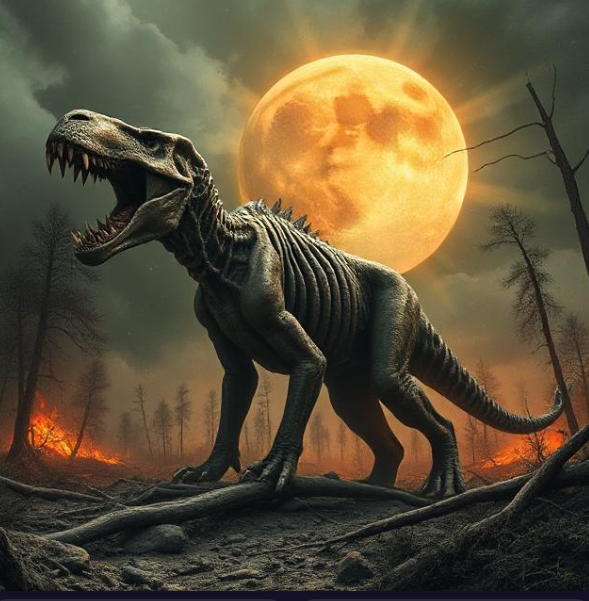De-Extinction Explained: Cloning, CRISPR, Pros, Cons, and the Return of Lost Beasts in Late 2025
Extinction is supposed to be permanent — a full stop in the story of life. Yet humans rarely respect full stops. From burning forests into silence to bleaching coral reefs into ghosts, we’ve turned survival into a debt that nature pays daily. Every bullet, every bulldozer, every pipeline carved into wilderness is a mark of absence — species don’t just vanish, we erase them.
Now science dares to challenge that erasure. Its de-extinction — the controversial idea that what is gone can rise again. Using tools like DNA sequencing, cloning, and CRISPR gene editing, researchers are trying to stitch together genomes of vanished giants: mammoths that once thundered across tundras, saber-tooths that ruled Ice Age plains, and dire wolves that left their bones in tar pits. The resurrection of the Pyrenean ibex in 2003, even if only for a few minutes, proved that extinction might glitch under human hands.
Related: Psychological Phenomenon
But de-extinction is more than a technical experiment. It is both promise and provocation — a mirror of our guilt, a gamble with ecosystems already fragile, and a question too big to ignore: If we can bring back the lost, should we?
Biological Processes:
Restoring Ancient DNA:
Finding ancient DNA in the fossil remains is the first step of de-extinction. Most of usable DNA degrades over time due to chemical process like depurination and cytosine deamination. Finding genetic code from bones, teeth or frozen tissues is foremost step since it is the only direct link to real genome. The code found is always degraded so its like finding pieces of a charred book which you have to complete yourself.
In a nutshell, its like reconstruction; what present is some structure-broken and incomplete, you make additions and it fixes into something similar as before.
Genome Sequencing
Its diving deep into what’s left. The code is now sent into computers to build a genetic blueprint of the species. It arranges the pieces into order so nothing important is missed from the base pairs. For instance, dog or wolf genomes have approximately 2.5-3 billion base pairs. Losing 1% of those pairs mean losing millions of base pairs. These base pairs distinguish one lineage of species from the other. Sequencing gives a structure to the incomplete code.
Genome Reconstruction:
Its the patching step. The missing parts are borrowed from relevant living species and computationally inferred into the structures to check how the resultant specie will look like. The more fragments we borrow from the relatives, farther is the new specie from natural. Its becomes a hybrid.
Gene Editing (CRISPR):
CRISPR is a precise gene-editing tool. Scientists first model the edits on computer software to predict how they might affect the genome. Then, using molecular machinery in the lab, they guide CRISPR to cut the DNA at exact spots and either remove, repair, or insert new sequences.
Cloning or Surrogacy:
When DNA is ready after editing, it is transferred to surrogates’ body where embryo is given a suitable environment to live and grow or is artificially cloned in laboratory.
Pros of De-Extinction:
- Restoring balance: Think of ecosystems as symphonies. Taking out a violin section makes the music limps. Putting it back, the melody heals. A mammoth on the tundra could shape landscapes; a bird could spread seeds again, a predator can balance the ecosystem and an ibex could heal the natural grassland.
- Righting wrongs: Most extinctions carry human fingerprints — bullets, bulldozers and greed. De-extinction feels like an apology. The harms, the agony Homo-Sapiens have caused these species over centuries, de-extinction could come across as a compensation for those. Consider Pyrenean Ibex declared extinct in 2000 were briefly resuscitated in 2003 through cloning. Though, it was alive for a very few minutes, but it was nonetheless a debt acknowledged.
- Science on fast-forward: Every attempt to revive the lost sharpens tools that can also rescue the endangered. Save the Saber-tooth, and maybe you save the tiger too.
- Wonder: Awe has value. People would pay to see a saber-tooth, a mammoth or a dire wolf. It fuels curiosity, education, even conservation and money. Let’s be honest — money is magnet. It attracts organizations, businesses and governments.
The Cons — Why It Might Backfire:
- Price tag: De-extinction isn’t just expensive, it’s astronomical. Cost of excavation of fossils, laboratory equipment for restoration and high-end technologies for genetic editing makes up a large sum. That money could protect rhinos, rainforests, coral reefs, blue whales — species still hanging by a thread.
- Misfits in a new world: The climate has shifted, forests have shrunk, predators have changed and so does the hunt. A revived species may step out of the lab only to stumble into extinction again.
- Unintended chaos: Ecosystems adapt to loss. It fits things that remain, not the ones that dropped. Drop a resurrected predator into the mix, and the balance tips. We may create new problems instead of fixing old ones.
For instance, saber-tooth have not evolved with species today. With no fear of humans and livestock, they may see those as a prey and wipe them out. They were apex predators of their time, they will hunt a lot. Too many prey killed means fewer plants grazed—vegetation overgrowth and increased risk of fires and habitat shifts.
- Ethical shadows: Behind every “miracle clone” are failed embryos, sickly births, suffering animals. Surrogates also face health hazards. Born species like Pyrenean Ibex was born with lung defect.
Conclusion:
De-extinction is not just about reviving species; it is about reviving the truths we try to bury. Every cloned embryo, every edited gene, every breath stolen back from extinction reflects us more than the animal itself. It reflects the bullets we fired, the forests we burned, the oceans we poisoned, and the arrogance that brought us here.
To bring back a mammoth, a saber-tooth, or a dire wolf is to bring back a ghost — and ghosts never return quietly. They return as questions. Will they heal ecosystems, or fracture them? Will they save biodiversity, or remind us of what we failed to protect?
Perhaps the real extinction we fear is not theirs, but our own ability to live with limits. De-extinction is a mirror, and when we dare to look, we may not see a beast from the Ice Age — we may only see ourselves.







